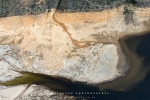











Astrophotography is fairly popular among photographers and amateur astronomers. Images of the night sky can be obtained with the most basic film and digital cameras. For simple star trails, no equipment may be necessary other than common tripods. There is a wide range of commercial equipment geared toward basic and advanced astrophotography. Amateur astronomers and amateur telescope makers also use homemade equipment and modified devices. To achieve the best images, it does however require one to purchase the fastest, wide lens you can afford. This allows for maximum light to enter the lens, f1.4 – f2.8 lenses are the lenses of choice here; they are however expensive.
Depending on the results one is looking for, it is best to capture stunning Milky Way images under low or no light pollution. This often requires one to travel uninhabited regions, like the Karoo or Cederberg in South-Africa, with charming images of windmills and rock formations combined with the Milky Way.
The Milky Way is a barred spiral galaxy some 100 000–120 000 light-years in diameter, which contains 100–400 billion stars! It may contain at least as many planets as well. The Solar System is located within the disc, about 27 000 light-years away from the Galactic Center, on the inner edge of one of the spiral-shaped concentrations of gas and dust called the Orion Arm. The stars in the inner ≈ (mathematical symbol for is approximately equal to) 10 000 light-years form a bulge and one or more bars that radiate from the bulge. The very center is marked by an intense radio source, named Sagittarius A*, which is likely to be a supermassive black hole. When observing the night sky, the term “Milky Way” is limited to the hazy band of white light some 30° wide, arcing across the sky. To capture the full arc, one needs to capture a panoramic view of several images, and stitch them together.
The Milky Way has a relatively low surface brightness. Its visibility can be greatly reduced by background light such as light pollution or stray light from the Moon. It is readily visible when the limiting magnitude is +5.1 or better and shows a great deal of detail at +6.1. This makes the Milky Way difficult to see from any brightly lit urban or suburban location, but very prominent when viewed from a rural area when the Moon is below the horizon, or on a New Moon.
As viewed from Earth, the visible region of the Milky Way’s Galactic plane occupies an area of the sky that includes 30 constellations. The center of the Milky Way lies in the direction of the constellation Sagittarius; it is here that the Milky Way is brightest. From Sagittarius, the hazy band of white light appears to pass westward to the Galactic anticenter in Auriga. The band then continues westward the rest of the way around the sky, back to Sagittarius. The band divides the night sky into two roughly equal hemispheres.
It is this marvel of Creation, that we as astrophotographers try to capture in as many artistic ways as possible. Our biggest threat to this form of photography is urban expansion with increased light pollution.
Click on the images below to view an enlarged single image.
All my images are available for purchase as prints. Digital images can be used under license agreement. Should you wish to purchase or license my images, please click here for more information, so I can assist you with your needs.
There are no upcoming events.
This is a demo store for testing purposes — no orders shall be fulfilled. Dismiss